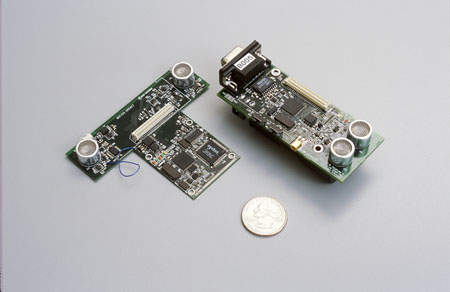
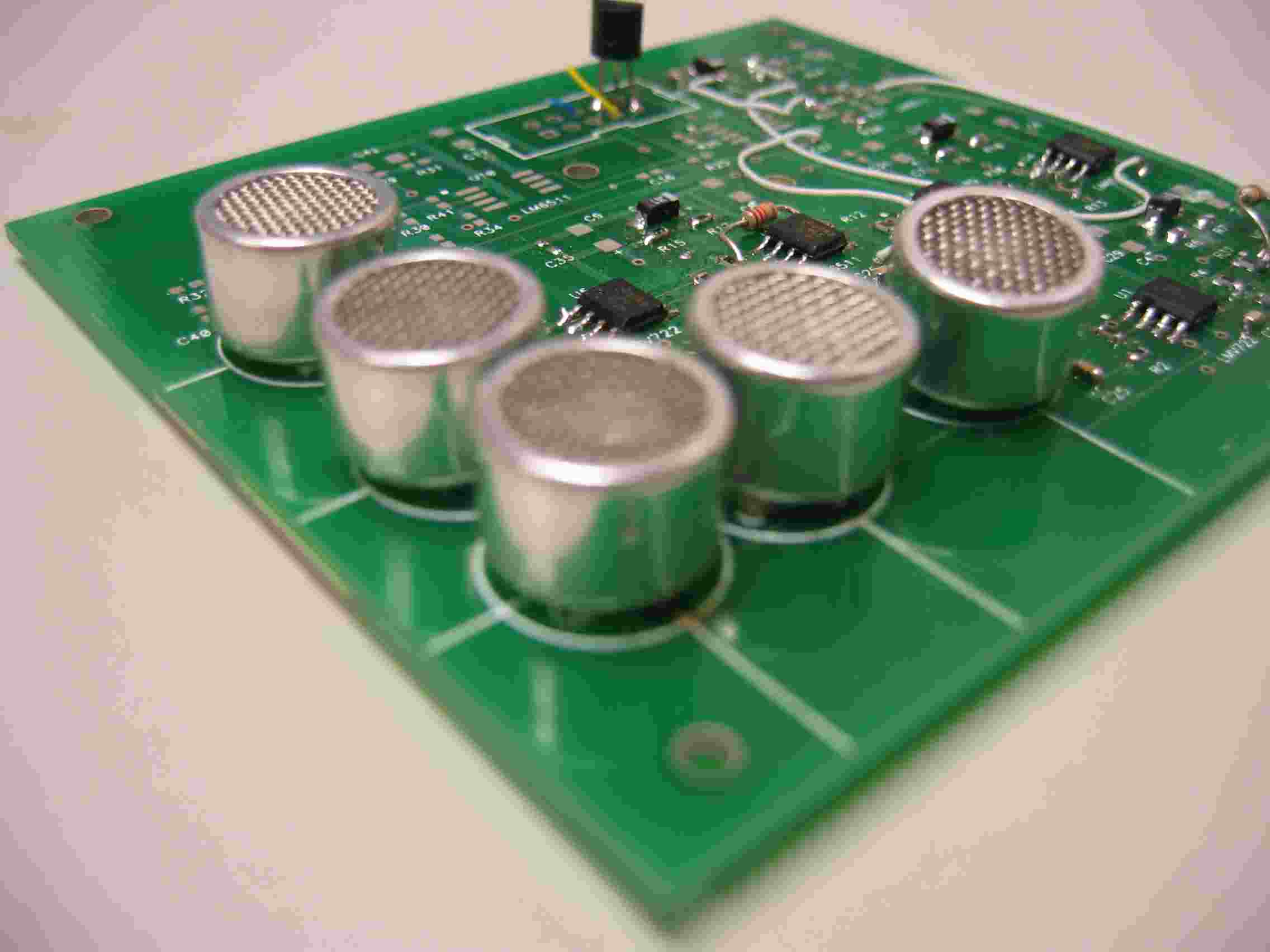
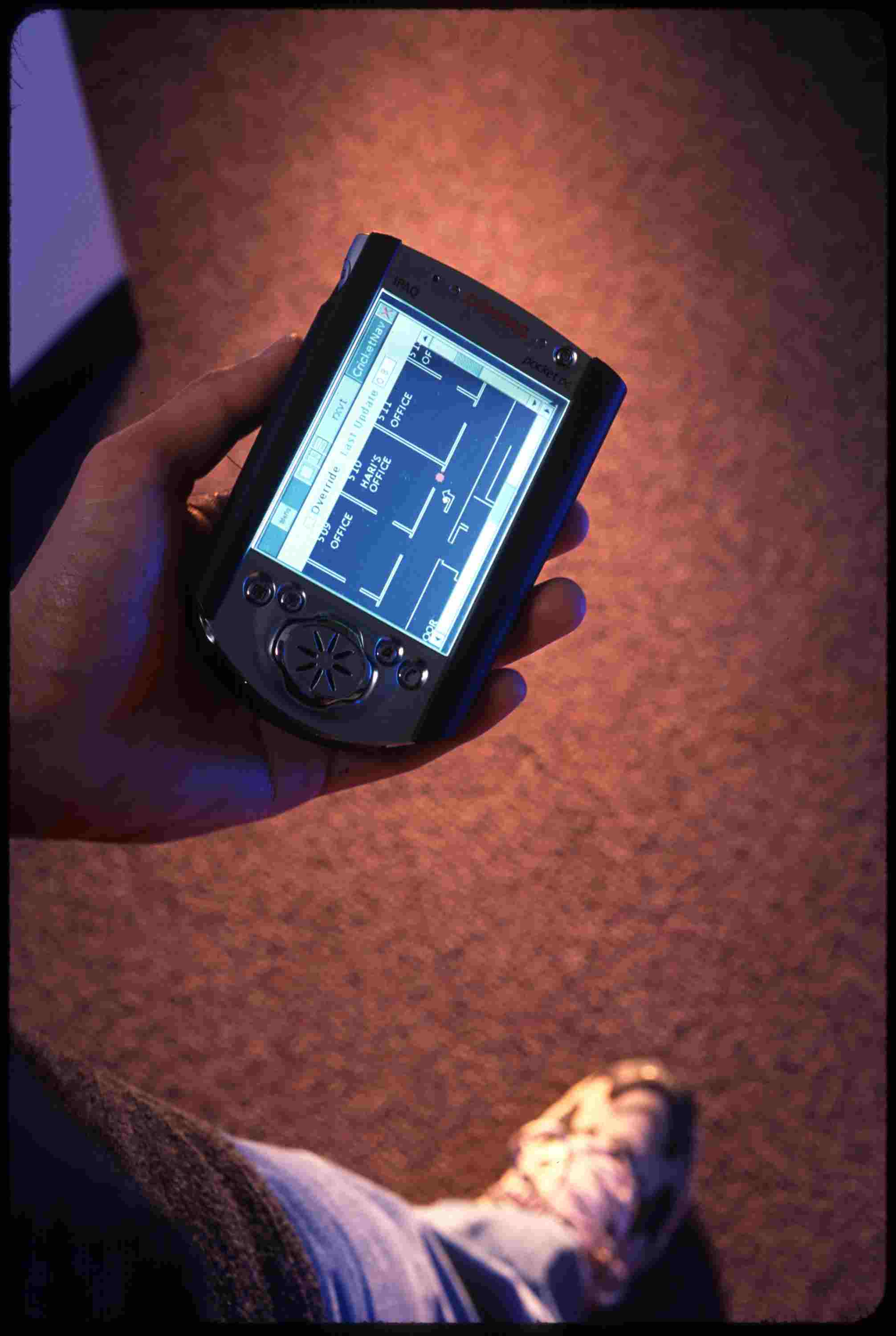



| news | - | latest hardware and software release |
| overview | - | cricket project description |
| technology | - | how it works? |
| applications & demos | - | what can you do with cricket? |
| download | - | v2 software and user manual |
| people | - | who are we? |
| papers | - | cricket documents |
| data | - | collection of some raw cricket data |
| acknowledgments | - | who sponsors cricket? |
| 2006-03-13 | Software release version 2.3.2 and firmware 2.3.2
|
| 2005-09-13 | Add a by page schematic download and update the schematics |
| 2005-01-26 | Software release version 2.3.0 and firmware 2.3.1 |
| 2004-10-29 | Added schematics to the download section |
| 2004-10-28 | New firmware and software version 2.2.2 |
| 2004-10-15 | New firmware and software version 2.2.1 |
| 2004-10-13 | New firmware and software version 2.2.0 |
There have been two major versions of Cricket to date (July 2004). Cricket v2, the current version, is substantially more accurate and energy-efficient compared to Cricket v1. v2 has a new software stack that runs on TinyOS, has better support for continuous object tracking, has support for various auto-configuration algorithms, etc. You can buy Cricket v2 units from Crossbow Technologies. The software for Cricket v2 (both embedded software and higher-layer software that runs on laptops/handhelds are available here. This software is under an open source license and can be used for education, research, and commercial purposes as long as the requirements in the copyright notice are followed. Cricket available from Crossbow Technologies may not be preloaded with the embedded software when shipped individually (to program the Crickets you will need a MIB510CA programmer).
Many applications in pervasive and sensor computing environments are context-aware, benefitting from knowledge of their external context, such as their location. Location may be specified as a coordinate position in some coordinate system, a geographic space such as a room or portion of a room, and as the orientation of a device within some coordinate system. Examples of location-aware applications that can be developed using Cricket including resource discovery, human/robot navigation, physical/virtual computer games, location-aware sensing, hospital/medical applications (e.g., equipment and patient tracking/monitoring), stream migration, pose-aware applications like the software flashlight/marker, etc.
Cricket is intended for use indoors or in urban areas where outdoor systems like the Global Positioning System (GPS) don't work well. It can provide distance ranging and positioning precision of between 1 and 3 cm, so applications that benefit from better accuracy that the cellular E-911 services and GPS will also find Cricket useful. Cricket is designed for low-power operation and can be used as a location-aware sensor computing node (running TinyOS), to which a variety of sensors can be attached.
In addition to determining spaces and estimating position coordinates, Cricket provides an indoor orientation capability via the Cricket compass. This facility is not yet commercially available (it is a research prototype)
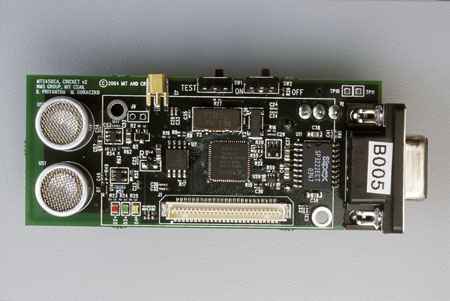
A Cricket listener attaches to the host device using an RS232 serial connection. The Cricket beacon and listener are identical hardware devices (see picture above). A Cricket unit can function as either beacon or listener, or can be used in a "mixed" mode in a symmetric location architecture (which may be apporpriate in some sensor computing scenarios), all under software control. You can attach a variety of sensors to a Cricket device using the 51-pin connector on the Cricket. We also have some research prototypes of Crickets with a Compact Flash (CF) interface, which may be a more convenient form factor to attach to handhelds and laptops than the RS232 interface. These devices may become widely available in a few months. They will be software- and protocol-compatible with the RS232 version. The picture below shows what the current CF device looks like; this design is likely to change.
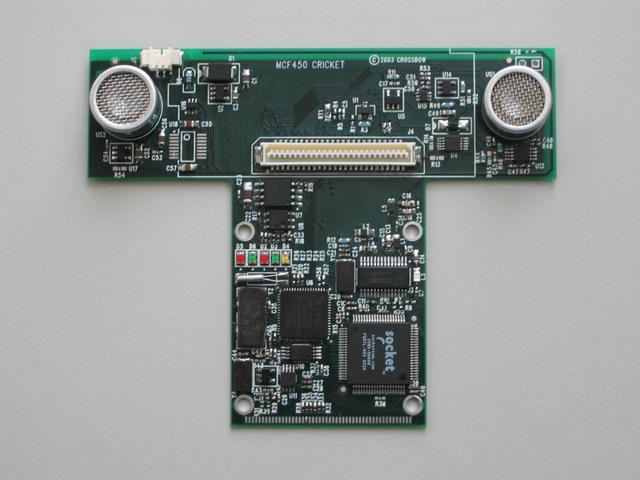
Cricket uses active beacons and passive listeners, which has two significant benefits. First, it is not a tracking system where a centralized controller or database receives transmissions from users and devices and tracks them. Second, it scales well as the number of devices increases; a system with active transmitters attached to devices wouldn't scale particularly well with the density of instrumented devices. Third, its decentralized architecture makes the system easy to deploy.
We've been deploying Cricket. Below, on the left, is a picture of its deployment in a room on the 9th floor of MIT's CSAIL in the Stata Center (click on the picture for a bigger image). Below, in the middle, is a picture of an older deployment in CSAIL's old home in Tech Square. On the right is a picture of a deployment from CSAIL's graphics lab in Tech Square.
Past contributors to Cricket include Roshan Baliga (MEng), Anit Chakraborty (MEng), Albert Lin (UROP), Nikos Michalakis (MEng), Jorge Rafael Nogueras (SM), Kevin Wang (MEng), Mike Whitaker (UROP)
We thank the National Science Foundation for funding Cricket under an ITR, "Scalable Location Aware Monitoring".
We thank NTT Inc. for having funded Cricket in the past under the NTT-MIT research collaboration.
We also thank Analog Devices, Inc. for their kind donation of electronic components and sensor devices.
NMS Home Projects People Papers Software
| CSAIL | E E C S | M I T |
M. I. T. Computer Science and Artificial Intelligence Laboratory · 32 Vassar Street · Cambridge, MA 02139 · USA